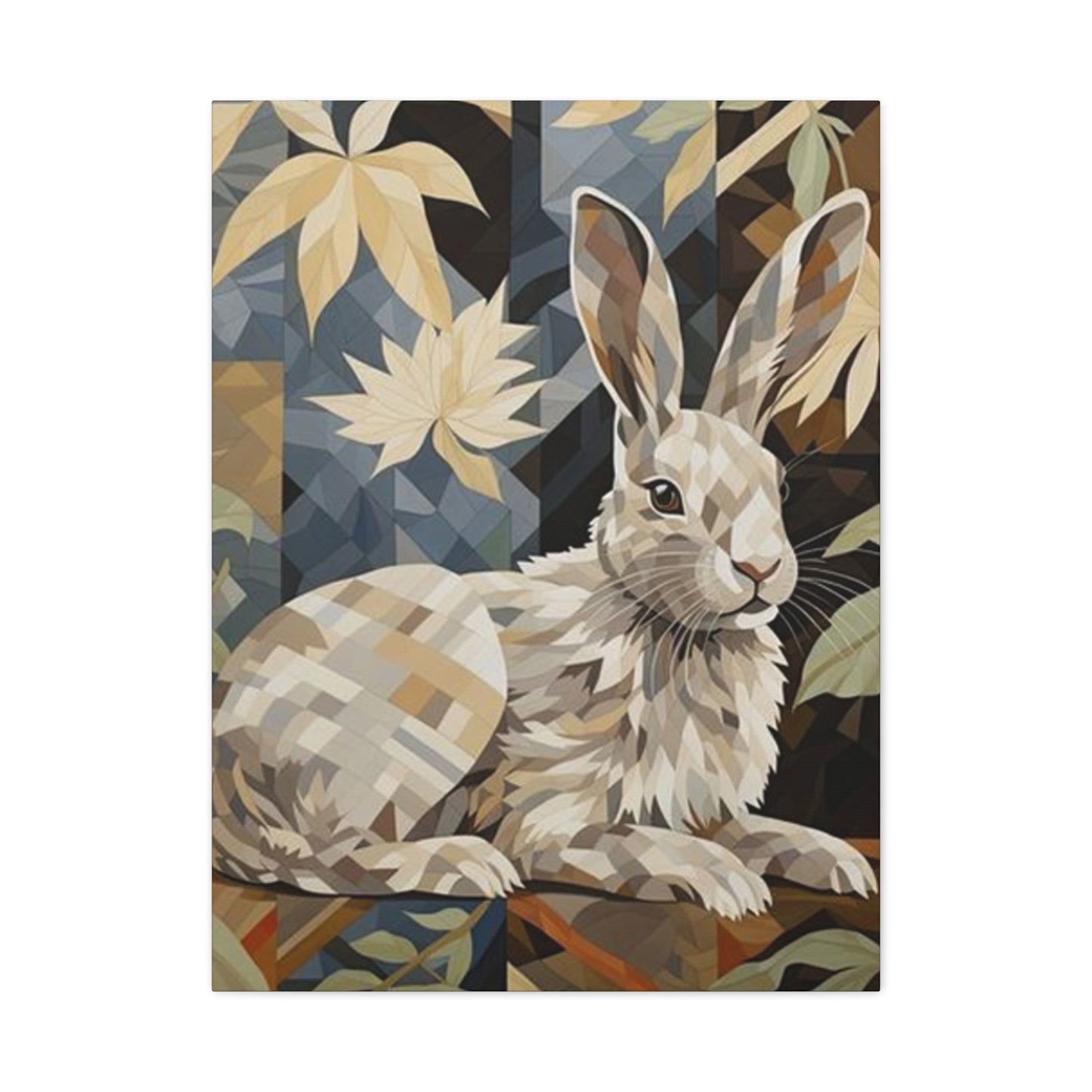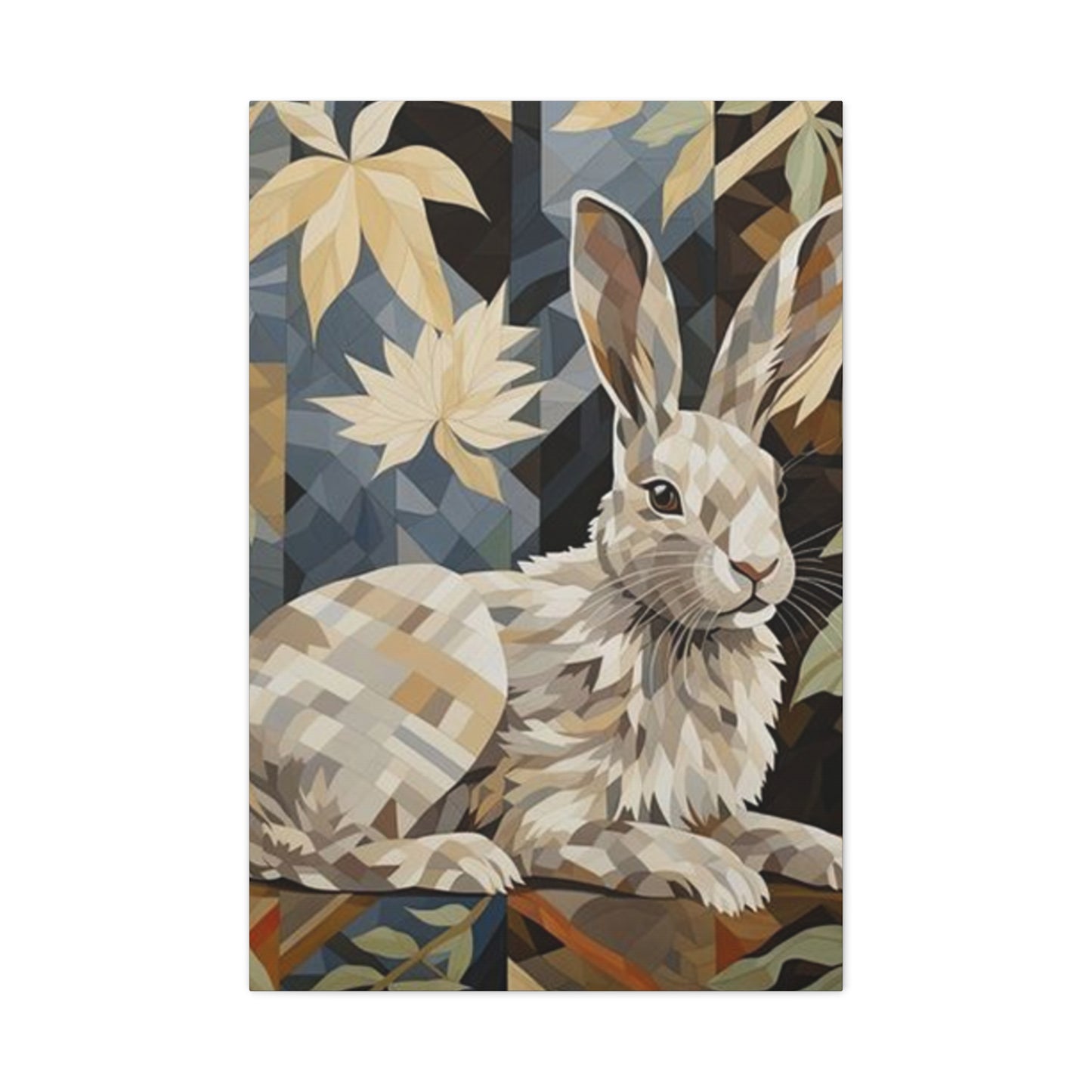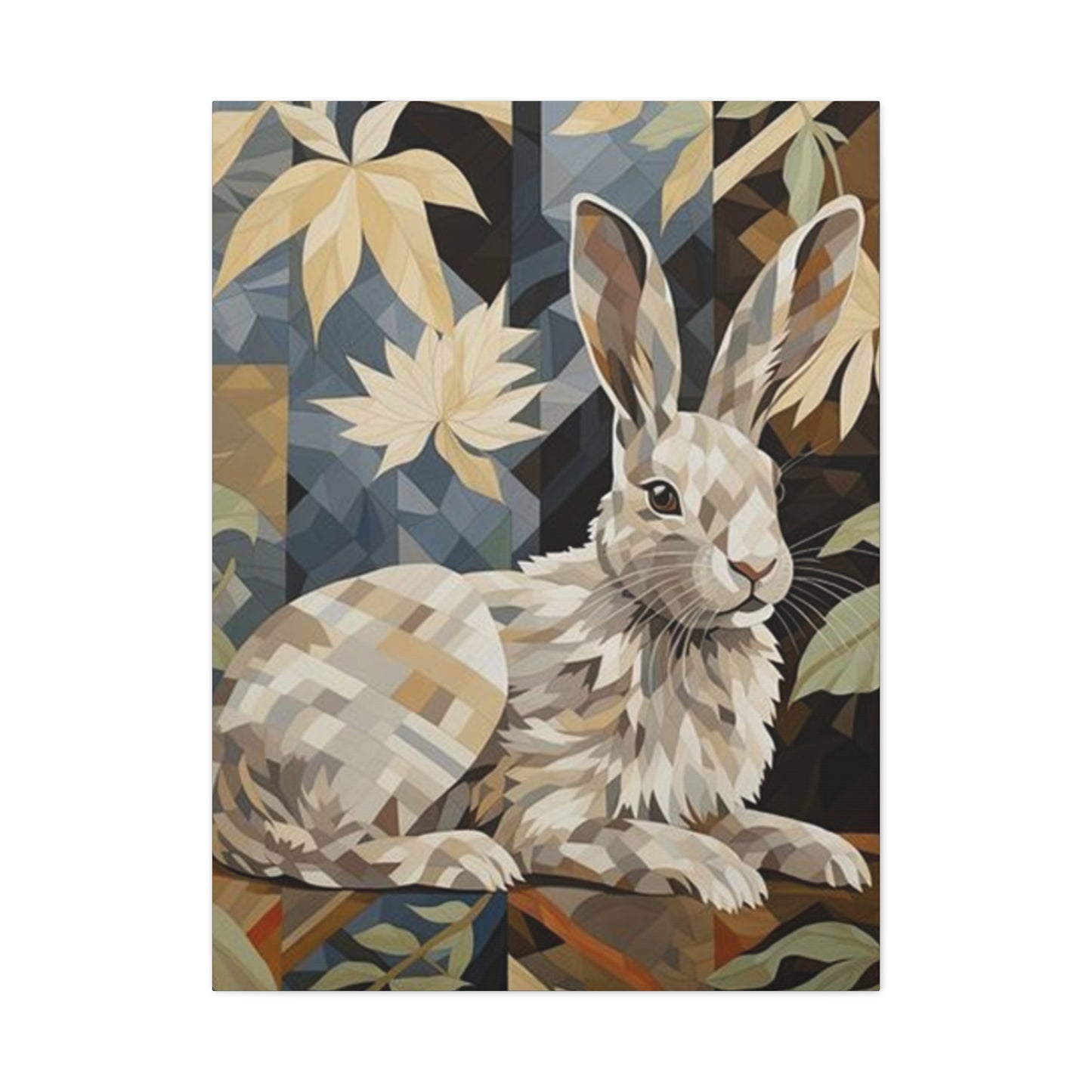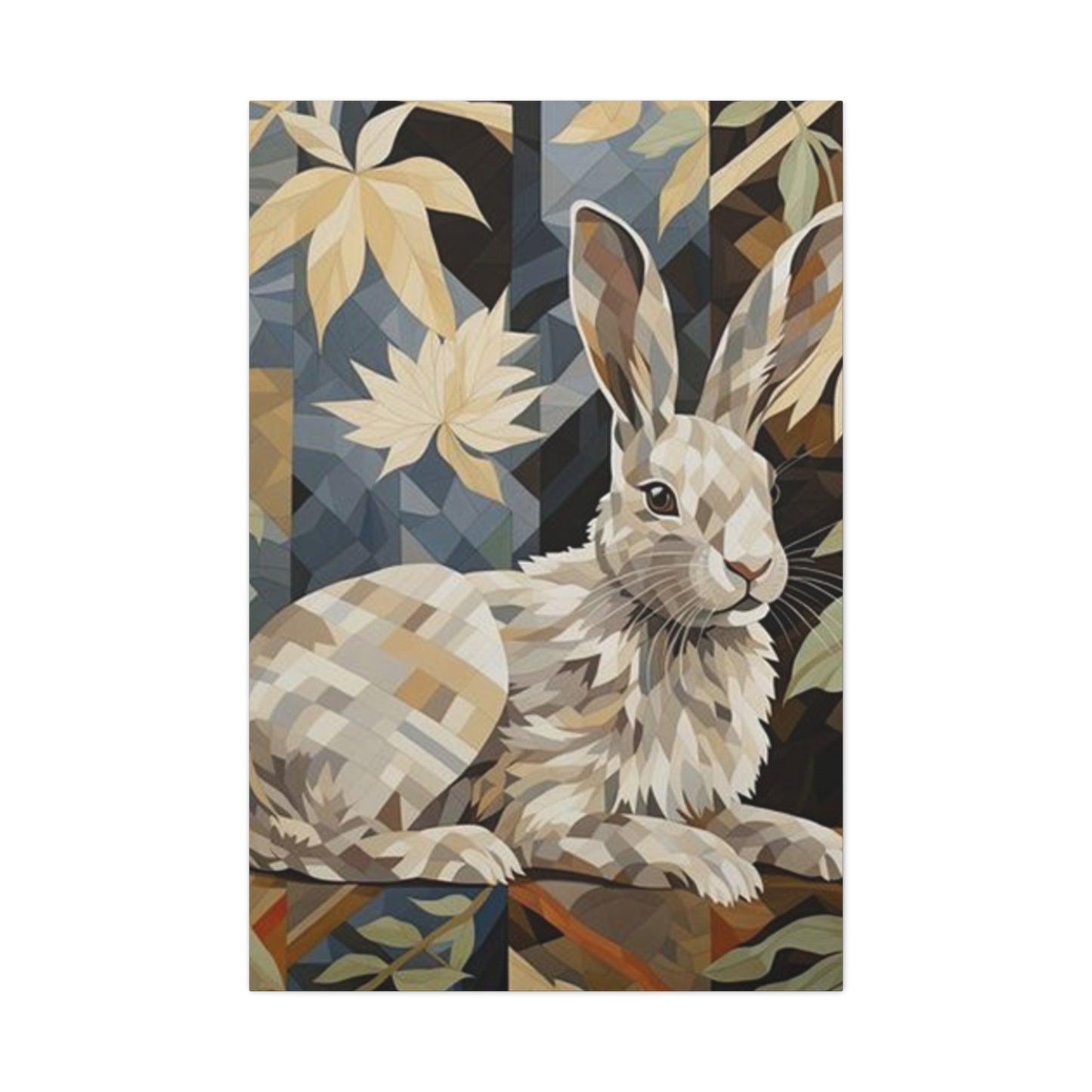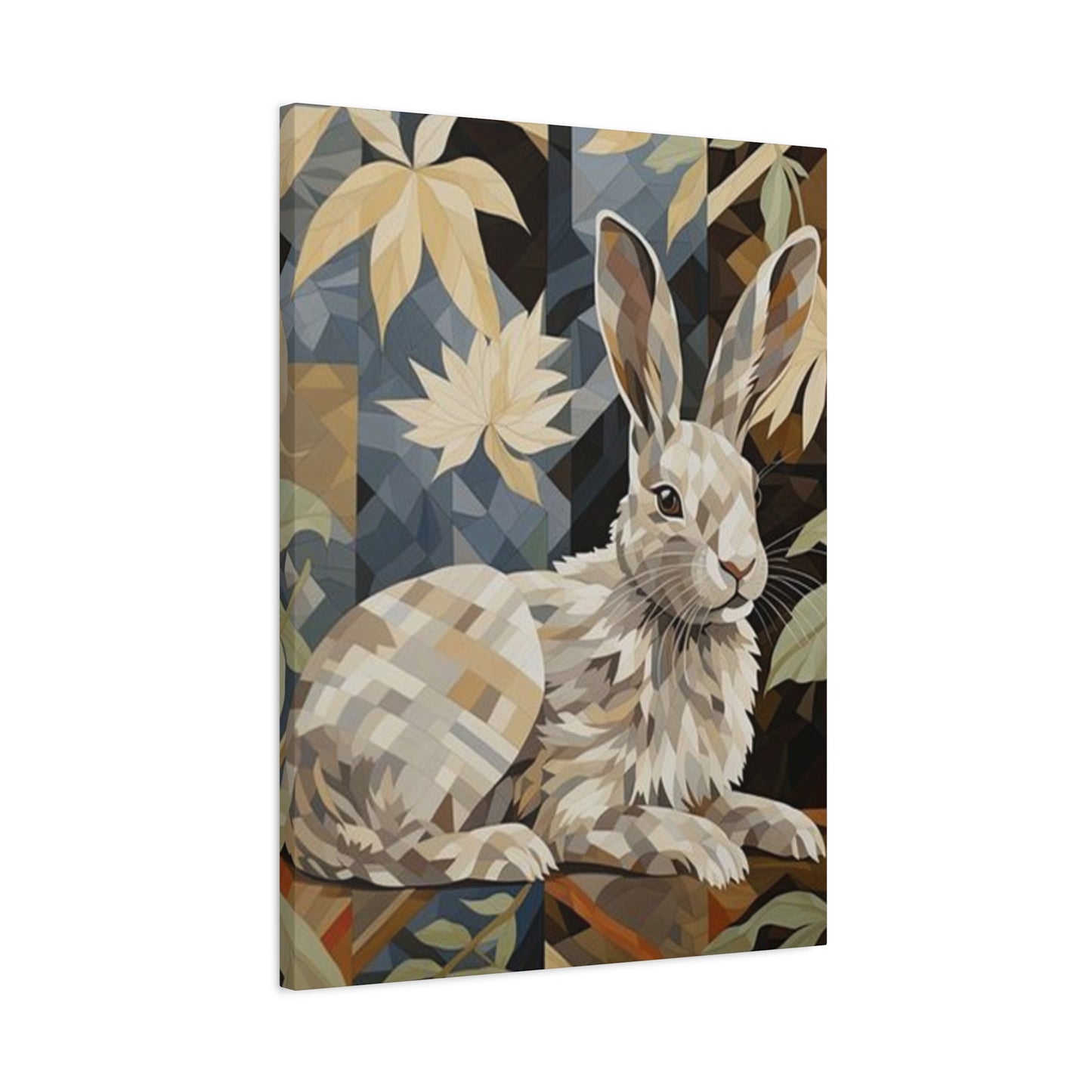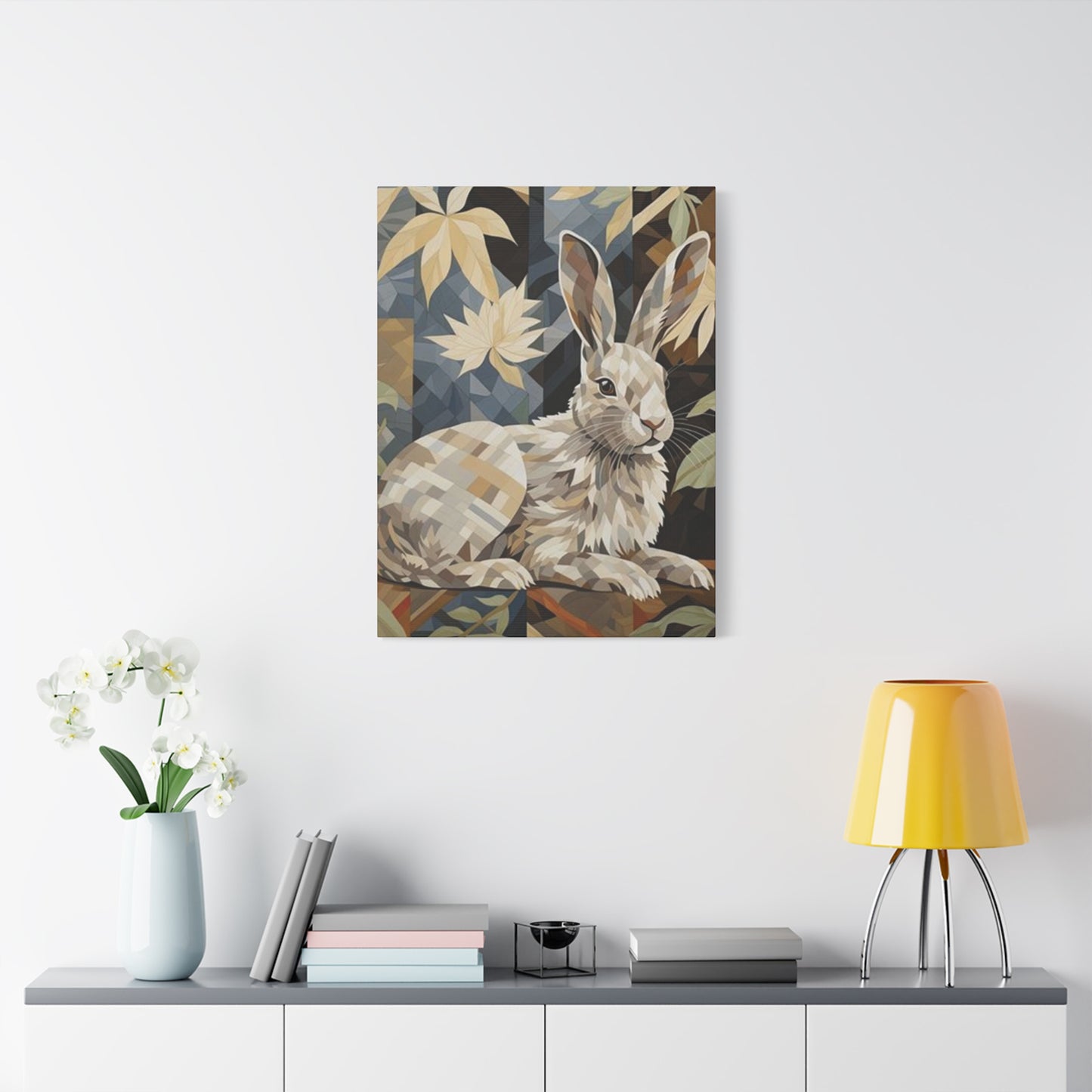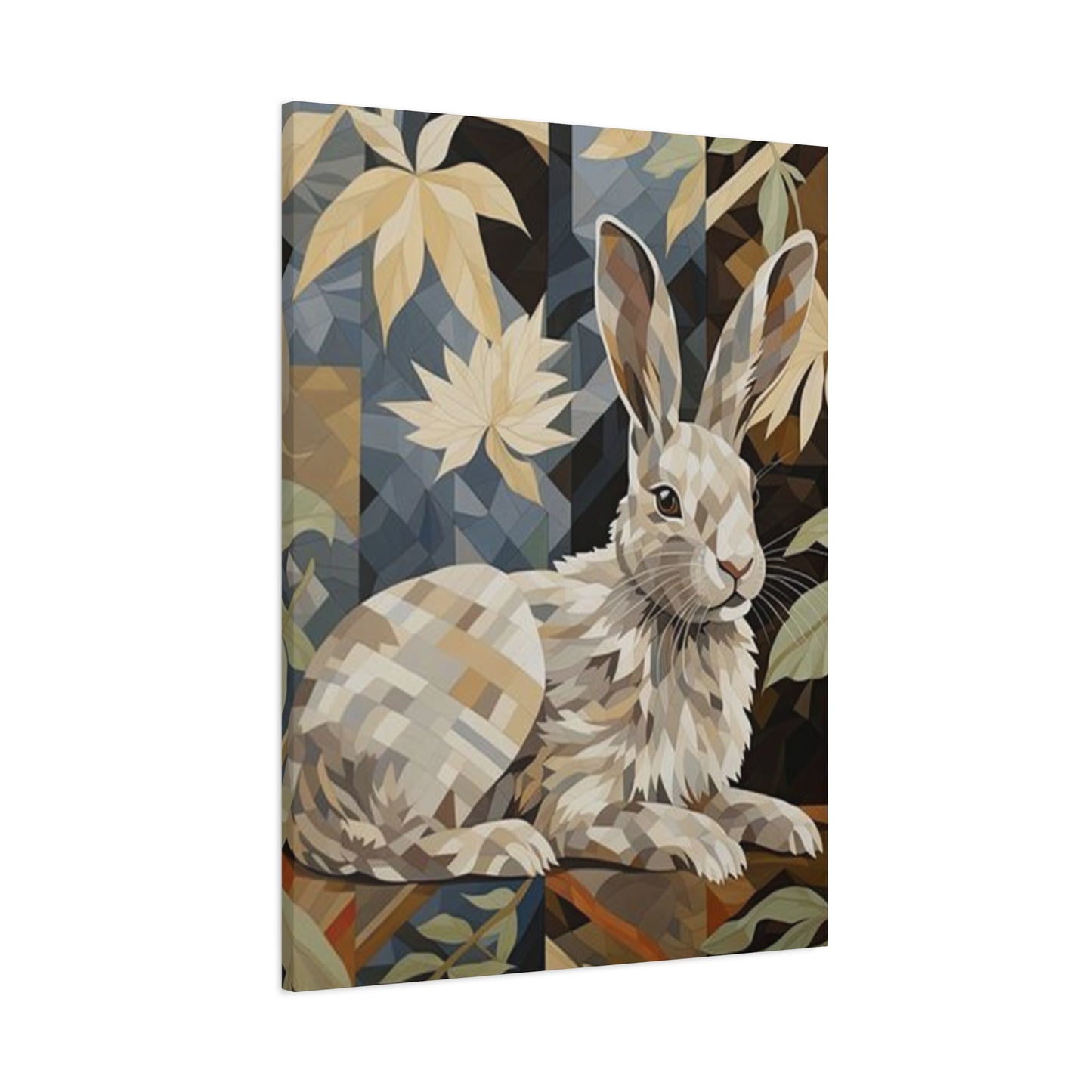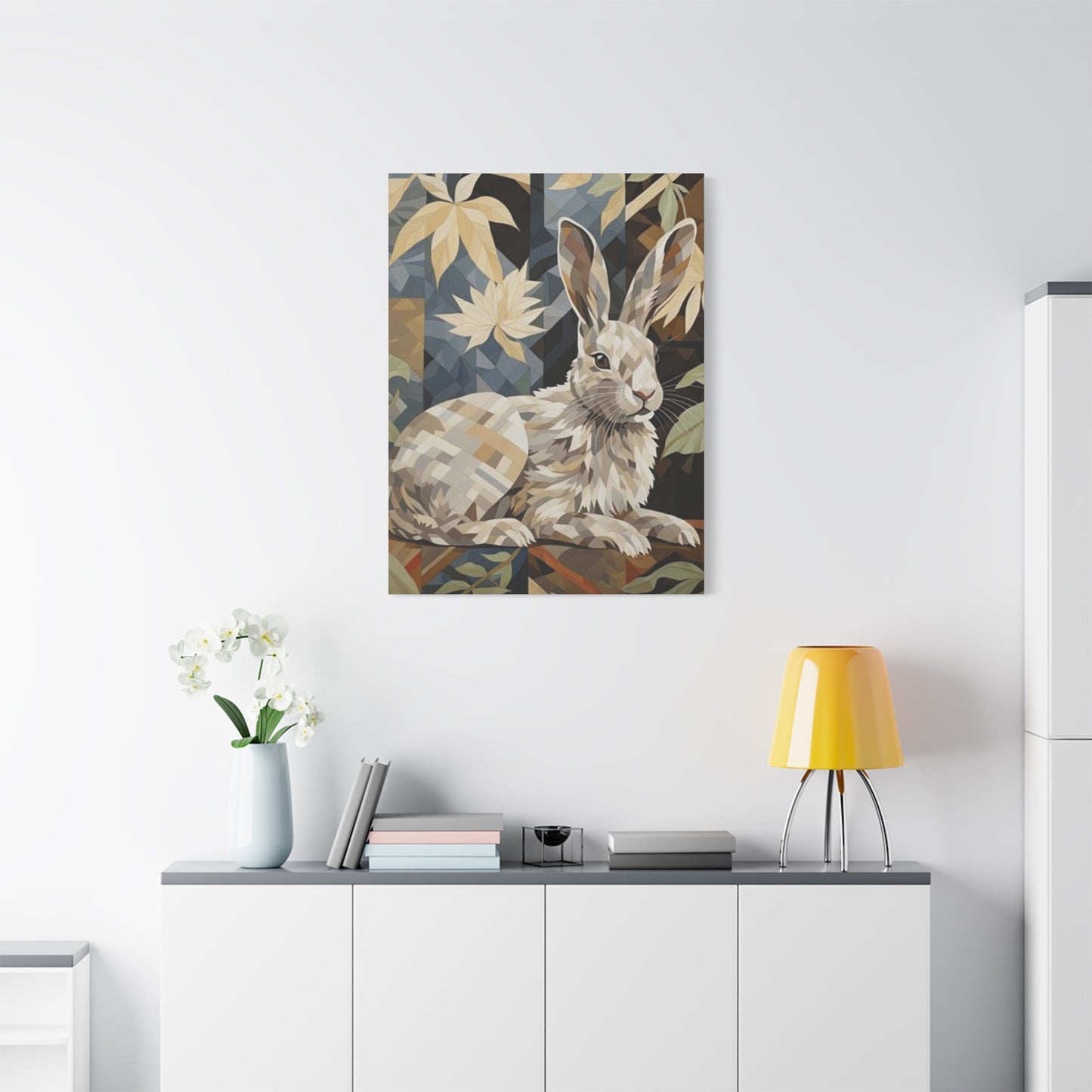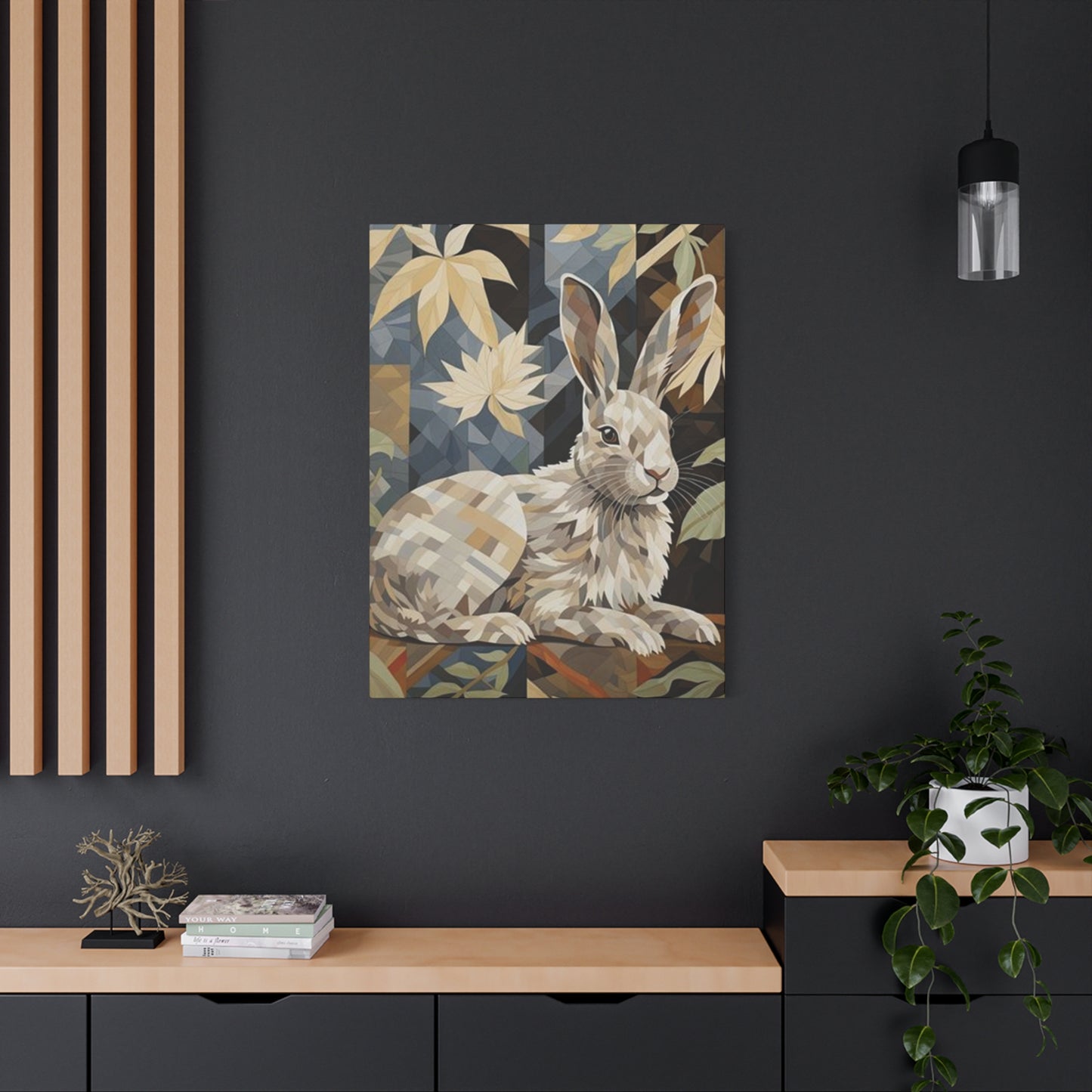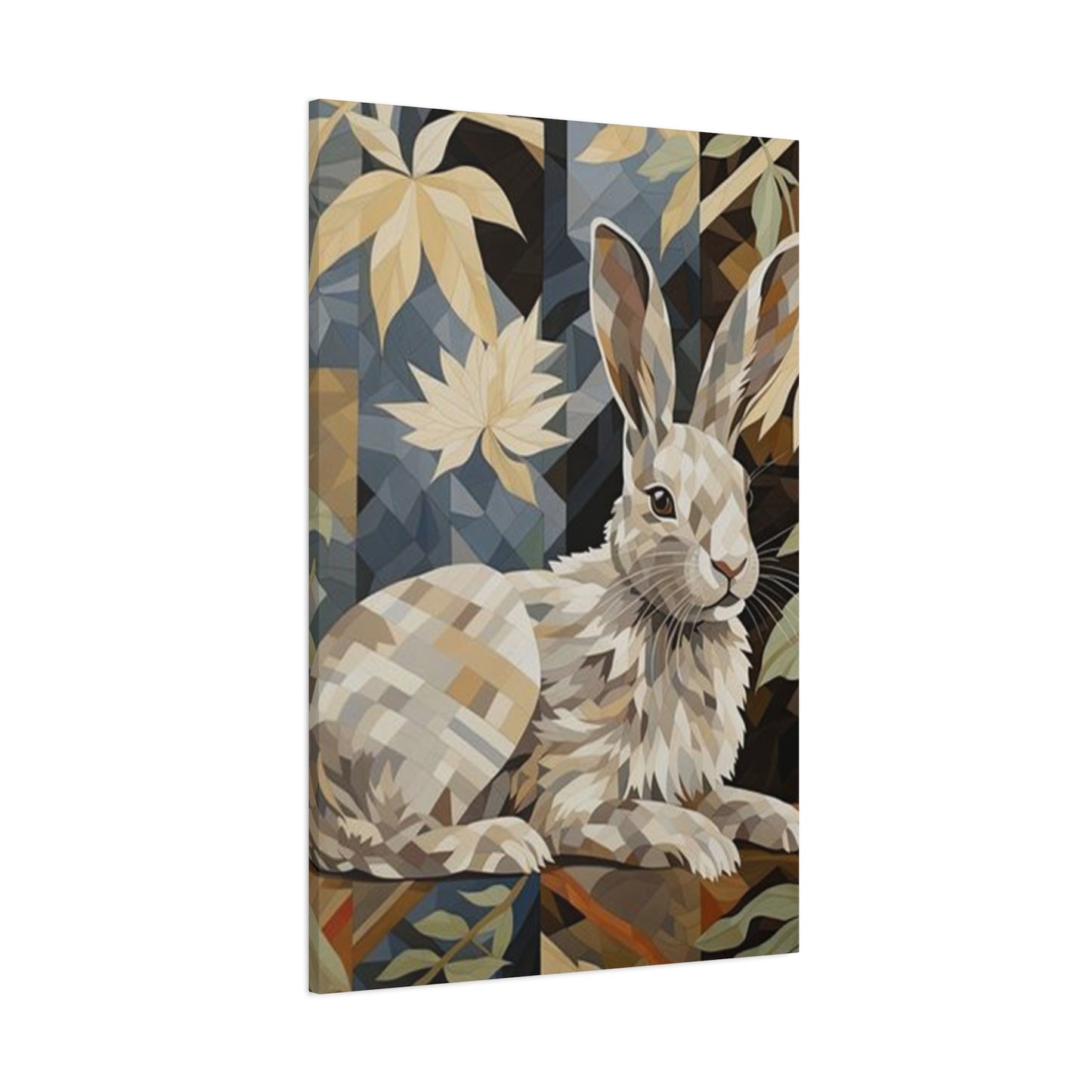Incorporating White Rabbit Painting Wall art into Your Home: Styling Tips for Every Room
The world of interior design continues to embrace the beauty of animal-inspired artwork, and among the most captivating choices is the white rabbit painting. This ethereal subject matter brings together elements of innocence, elegance, and sophistication that can transform any living space into a refined sanctuary. Whether you're drawn to abstract interpretations or realistic portrayals, white rabbit wall art offers endless possibilities for creating a distinctive aesthetic in your home.
Contemporary homes increasingly feature animal portraits as focal points, and the white rabbit has emerged as a particularly popular choice among design enthusiasts. The pristine appearance of these creatures, combined with their symbolic significance across various cultures, makes them an ideal subject for wall art. From minimalist interpretations to elaborate compositions, these paintings can adapt to virtually any interior design scheme while maintaining their visual impact.
The Timeless Appeal of Animal Portraits in Modern Spaces
Animal imagery has maintained its relevance in artistic expression throughout human history, evolving from cave paintings to contemporary digital art. The representation of creatures in visual form connects us to nature while allowing artists to explore themes of beauty, vulnerability, and character. In modern interior design, animal portraits serve multiple purposes beyond mere decoration. They introduce organic elements into built environments, create conversation starters, and reflect the personality and values of homeowners.
The choice of animals in artwork often carries deeper meaning than simple aesthetic preference. Different creatures evoke distinct emotional responses and cultural associations. Rabbits, specifically, have appeared in artistic traditions worldwide, from ancient Egyptian hieroglyphics to Renaissance paintings and contemporary pop culture. Their representation in art has ranged from symbolic religious imagery to whimsical children's book illustrations, demonstrating their versatility as artistic subjects.
Contemporary animal portraiture has experienced a renaissance in recent years, with artists exploring new techniques and interpretations. The movement away from traditional hunting trophies and taxidermy toward painted and photographed animal portraits reflects changing attitudes toward nature and wildlife. Homeowners now prefer celebrating animals through art that honors their beauty without harm, creating spaces that feel both sophisticated and ethically conscious.
White rabbit paintings particularly resonate with modern sensibilities because they combine the appeal of animal imagery with a refined color palette. The predominantly neutral tones make these pieces incredibly versatile, allowing them to integrate seamlessly into various design schemes. Whether your space features bold colors that need balancing or maintains a monochromatic theme that benefits from textural interest, a white rabbit painting can fulfill multiple design objectives simultaneously.
The psychological impact of incorporating animal imagery into living spaces should not be underestimated. Studies have shown that viewing images of animals can reduce stress levels, increase feelings of calm, and even improve mood. When you select a white rabbit painting for your home, you're not just choosing a decorative object but creating an environment that supports mental wellbeing. The gentle nature associated with rabbits amplifies these positive effects, making such artwork particularly suitable for bedrooms, meditation spaces, and areas designated for relaxation.
Symbolic Meanings Behind Rabbit Imagery in Art
Throughout history, rabbits have carried rich symbolic meaning across different cultures and time periods. Understanding these associations can deepen your appreciation for white rabbit artwork and help you select pieces that resonate with your personal values or aspirations. In many Eastern cultures, rabbits represent longevity, cleverness, and lunar energy. The famous jade rabbit of Chinese mythology, said to live on the moon preparing the elixir of immortality, has influenced countless artistic interpretations over centuries.
Western traditions have associated rabbits with fertility, abundance, and spring renewal, connections that trace back to pre-Christian celebrations of seasonal change. The Easter bunny, perhaps the most recognizable rabbit symbol in Western culture, embodies themes of new beginnings and transformation. These positive associations make rabbit imagery particularly appealing for homes, where we naturally seek to create environments that feel hopeful and life-affirming.
In literature and popular culture, rabbits have served as guides between worlds, most famously in Lewis Carroll's Alice's Adventures in Wonderland. The White Rabbit character, with his pocket watch and waistcoat, represents curiosity, the passage of time, and the threshold between ordinary and extraordinary experiences. Artwork featuring white rabbits can evoke these themes, adding layers of meaning to your interior design that extend beyond visual appeal.
Native American traditions often portray rabbits as trickster figures, clever beings who use intelligence rather than strength to navigate challenges. This symbolism might resonate with those who value adaptability and creative problem-solving. African folklore similarly depicts rabbits as cunning characters who outwit more powerful adversaries, stories that have influenced artistic representations across the diaspora.
The color white itself carries significant symbolic weight across cultures. It typically represents purity, clarity, peace, and new beginnings. When combined with rabbit imagery, these associations multiply, creating artwork that can symbolize everything from innocent joy to spiritual awakening. For those drawn to feng shui principles, white animals in artwork can activate metal element energy, supporting qualities like precision, clarity, and fresh starts.
Abstract Interpretations Versus Realistic Portrayals
The artistic approach taken in depicting rabbits significantly impacts how the artwork functions within your space. Abstract interpretations offer certain advantages, including versatility, contemporary appeal, and the ability to complement bold design choices. These pieces typically reduce the rabbit form to essential shapes, colors, and gestures, allowing viewers to engage with the work on multiple levels. An abstract white rabbit painting might feature sweeping brushstrokes that suggest movement and energy, or geometric shapes that deconstruct the animal form into architectural elements.
Abstract animal art invites personal interpretation, making it an excellent conversation piece. Two viewers might perceive entirely different qualities in the same abstract rabbit painting, with one seeing playfulness and another sensing contemplation. This interpretive flexibility allows the artwork to evolve with you, revealing new aspects as your perspective changes over time. Abstract pieces also tend to feel more contemporary, making them ideal for modern and minimalist interiors where realistic imagery might seem too traditional.
Realistic rabbit portrayals, conversely, offer their own distinct benefits. These works showcase technical skill, celebrate the actual beauty of rabbits, and can create striking focal points through detailed rendering. A hyperrealistic white rabbit painting captures the texture of fur, the glint of light in eyes, and the subtle variations in coloring that make each animal unique. Such pieces demonstrate the artist's observational abilities and technical mastery, qualities that many collectors value highly.
The choice between abstract and realistic approaches often reflects broader design preferences. Spaces decorated in traditional, rustic, or naturalistic styles typically accommodate realistic animal portraits more easily. These paintings reinforce the connection to nature and craftsmanship that such design schemes celebrate. Meanwhile, contemporary, industrial, or minimalist spaces often benefit more from abstract interpretations, which align with the simplified forms and bold gestures characteristic of these styles.
Some of the most compelling white rabbit artwork exists in the space between pure abstraction and complete realism. Semi-abstract or stylized approaches capture recognizable rabbit forms while incorporating abstract elements like exaggerated proportions, unusual color treatments, or expressive brushwork. These hybrid pieces offer the best of both worlds, providing enough representational detail to clearly communicate their subject while maintaining the contemporary edge and interpretive openness of abstract work.
Color Theory and White Rabbit Paintings
Although white rabbit paintings center on a neutral subject, they involve sophisticated color decisions that dramatically impact their effectiveness in interior design. Pure white rarely exists in nature or art; what we perceive as white typically contains subtle color variations that create depth and interest. Artists rendering white rabbits must consider whether to use cool whites with blue or purple undertones, warm whites tinged with cream or yellow, or variations that shift between warm and cool depending on lighting conditions.
The background color choices in white rabbit paintings profoundly affect the overall mood and versatility of the piece. A white rabbit against a stark black background creates dramatic contrast, making the subject appear luminous and drawing maximum attention to form and detail. This high-contrast approach suits modern interiors and creates striking focal points but can feel intense in smaller spaces or rooms intended for relaxation.
Paintings featuring white rabbits against colored backgrounds offer different possibilities. Cool background colors like blues, greens, or purples create serene, calming compositions that work beautifully in bedrooms and bathrooms. These color combinations evoke natural settings, with blue suggesting sky and green implying grass or foliage. Warm background colors like terracotta, gold, or coral create more energetic, welcoming compositions suitable for social spaces like living rooms and dining areas.
Neutral backgrounds in tones of gray, beige, or taupe allow white rabbit subjects to shine without overwhelming color statements. These pieces integrate most easily into existing design schemes because they introduce visual interest without demanding specific color coordination. A white rabbit painting with a neutral background can bridge different color zones in open-plan spaces or serve as a calming element in rooms featuring multiple patterns and textures.
Some of the most sophisticated white rabbit paintings incorporate multiple colors in subtle ways, using varied tones in the background, shadows cast by the subject, or reflected light on the rabbit's coat. These complex color relationships reward close viewing while maintaining impact from a distance. Such pieces demonstrate artistic mastery and provide lasting visual interest, preventing the artwork from feeling static or one-dimensional.
When selecting white rabbit artwork, consider your existing color palette and whether you want the painting to blend seamlessly or provide contrast. In a room dominated by cool colors, a white rabbit painting with warm undertones can add balance and prevent the space from feeling too austere. Conversely, in warm-toned spaces, artwork featuring cool whites can provide refreshing contrast that keeps the environment from feeling overwhelming.
Selecting the Perfect Size for Your Space
Determining the appropriate size for white rabbit artwork requires careful consideration of your room dimensions, wall space, and surrounding furniture. Interior designers typically recommend that wall art should occupy roughly two-thirds to three-quarters of the width of the furniture piece it hangs above. For a sofa measuring seventy-two inches wide, for example, artwork between forty-eight and fifty-four inches wide creates pleasing proportions. However, this guideline serves as a starting point rather than an absolute rule, and creative approaches sometimes yield the most compelling results.
Large-scale white rabbit paintings, those measuring five feet or more in any dimension, create dramatic focal points that anchor entire rooms. These statement pieces work best in spacious areas with high ceilings, where they can breathe visually without overwhelming the space. A substantial white rabbit painting above a fireplace mantel or behind a bed establishes a strong design anchor that other elements can reference and support. The investment in a large original or high-quality reproduction often proves worthwhile because such pieces fundamentally shape how a room feels and functions.
Medium-sized artwork, typically ranging from twenty-four to forty-eight inches in either dimension, offers maximum versatility. These pieces work effectively above sofas, consoles, and beds while remaining manageable for installation and future relocation. Medium white rabbit paintings can stand alone as focal points in smaller rooms or combine with other pieces in gallery wall arrangements. This size range also tends to be more accessible in terms of pricing, whether purchasing originals or reproductions, making it an approachable entry point for building an art collection.
Small white rabbit paintings measuring less than twenty-four inches create intimate viewing experiences and work beautifully in collections. These pieces excel in spaces like hallways, bathrooms, and cozy reading nooks where large artwork might feel oppressive. Small paintings also allow for more experimental choices in style and treatment because their limited scale reduces risk. You might select a boldly abstract or unconventional white rabbit painting in a small size that you wouldn't commit to at larger dimensions, adding personality and interest to your space without major investment.
The relationship between artwork size and viewing distance matters significantly. Large paintings need adequate viewing distance to be appreciated properly; when hung in small rooms where viewers stand close to walls, they can feel overwhelming and lose compositional coherence. Conversely, small detailed paintings lose their impact when viewed from across large rooms. Consider the typical viewing distance in each space when selecting artwork size, aiming for proportions that allow comfortable viewing from the most common vantage points.
Framing Options That Enhance White Rabbit Artwork
The frame you select for white rabbit artwork significantly impacts how the piece integrates into your space and the overall impression it creates. Framing serves both practical and aesthetic functions, protecting the artwork while shaping how viewers perceive and interact with it. The wrong frame can diminish even exceptional artwork, while thoughtful framing elevates and enhances the piece, making it feel more valuable and intentional.
Traditional wood frames offer warmth and craftsmanship that complements many white rabbit paintings, particularly those with realistic rendering or classical composition. Natural wood tones ranging from light oak to deep walnut create organic connections between the artwork and interior architecture, especially in homes featuring wood flooring, trim, or furniture. The grain and texture of wood frames add another layer of visual interest, creating frames that function as design elements rather than mere borders.
Painted wood frames provide opportunities to introduce color coordination or contrast. A frame painted in a color pulled from the painting's background can create cohesion, making the artwork feel integrated into the overall design scheme. Alternatively, a frame in a complementary color creates vibrant energy that makes the artwork pop dramatically. Black painted frames offer sophistication and work with virtually any artwork, while white painted frames create seamless, gallery-like presentations that feel contemporary and airy.
Metal frames bring different qualities to white rabbit artwork, offering sleek contemporary aesthetics that align with modern and industrial design styles. Thin metal frames in black, silver, or gold provide clean edges that define the artwork without competing for attention. These frames work particularly well with abstract or minimalist white rabbit paintings, where ornate framing might conflict with the artwork's simplified aesthetic. Metal frames also coordinate beautifully with other metal accents in a room, from lighting fixtures to furniture hardware, creating design continuity.
Float frames, which create the illusion that artwork hovers within the frame, add dimensional interest to white rabbit paintings. These frames work especially well with canvas paintings, showcasing the depth and texture of the artwork while creating a gallery-quality presentation. The shadow gap between the artwork and frame adds sophistication and makes even modestly sized pieces feel more substantial and important.
Mat boards serve important functions in framing white rabbit artwork, particularly prints and works on paper. Mats create breathing room around the artwork, preventing the composition from feeling cramped or the subject from appearing to press against frame edges. White or cream mats offer classic, neutral presentations that work with virtually any artwork and interior design. Colored mats can be used strategically to pick up tones from the painting or coordinate with room colors, though they risk looking dated more quickly than neutral options.
Placement Strategies for Maximum Visual Impact
Where you position white rabbit artwork within your space dramatically affects its impact and how effectively it enhances your interior design. The most common location for significant artwork is above sofas in living rooms, where pieces serve as focal points that anchor seating arrangements and establish the room's aesthetic tone. When hanging artwork above furniture, aim for the bottom edge of the frame to sit six to twelve inches above the furniture top, creating visual connection without excessive gap that makes the elements feel disconnected.
Artwork placement at proper eye level ensures comfortable viewing and creates balanced, professional-looking installations. The general guideline suggests hanging art so the center sits at fifty-seven to sixty inches from the floor, roughly average eye height for adults. However, this rule requires adjustment based on ceiling height, furniture placement, and the specific piece's proportions. In rooms with high ceilings, slightly higher placement often looks more appropriate, while spaces with low ceilings may benefit from lower hanging heights that make ceilings appear higher.
Above the bed represents another prime location for white rabbit artwork, creating a focal point in the room's most important furniture arrangement. Artwork in this position should relate to the bed width, typically spanning at least half the headboard width or centered above the bed if no headboard exists. The calming associations of white rabbit imagery make such pieces particularly suitable for bedrooms, where they contribute to restful atmospheres conducive to sleep and relaxation.
Dining rooms provide excellent opportunities for showcasing white rabbit artwork, particularly on walls visible from the table. Art in dining spaces sets the mood for meals and gatherings, influencing how the room feels during use. White rabbit paintings with warm undertones or energetic compositions can make dining rooms feel more welcoming and stimulate conversation, while serene, contemplative pieces create sophisticated backdrops for formal dinners.
Hallways and entryways often go overlooked as artwork locations, yet these transitional spaces offer valuable opportunities for creating first impressions and connecting different areas of your home. A striking white rabbit painting in an entryway establishes your aesthetic sensibilities immediately upon entering, while a series of smaller pieces in a hallway creates a gallery-like experience that makes practical circulation space feel intentional and designed.
Bathrooms deserve consideration as artwork locations, particularly powder rooms and master bathrooms with adequate wall space. White rabbit paintings contribute to spa-like atmospheres that make these functional spaces feel more luxurious and intentional. Ensure any artwork in bathrooms receives proper protection from humidity through appropriate framing and placement away from direct water exposure. The private nature of bathrooms allows for more personal or unconventional artwork choices that might feel too bold in public areas of your home.
Home offices benefit enormously from thoughtfully selected artwork that influences mood and productivity. White rabbit paintings can introduce calming elements into work environments, reducing stress and supporting focus. The symbolic associations of rabbits with cleverness and quick thinking might provide subtle motivation and inspiration during work hours. Ensure office artwork doesn't create screen glare or distraction when positioned near computer monitors.
Integrating White Rabbit Artwork into Various Design Styles
The versatility of white rabbit paintings allows them to enhance virtually any interior design style, though certain approaches prove particularly effective for specific aesthetics. In minimalist spaces characterized by clean lines, neutral colors, and uncluttered surfaces, white rabbit artwork serves as a focal point that introduces organic form without compromising the style's essential simplicity. Select pieces with clean compositions, limited color palettes, and elegant simplicity that align with minimalist principles. A single large-scale painting or a precisely arranged collection of smaller works can provide visual interest while maintaining the restraint that defines minimalist design.
Scandinavian interiors, with their emphasis on natural materials, light palettes, and cozy functionality, welcome white rabbit artwork that reinforces these values. Choose pieces featuring soft, muted backgrounds in colors like dusty blue, sage green, or warm gray that harmonize with typical Scandinavian color schemes. Artwork showing rabbits in naturalistic settings or simplified, stylized forms complements the nature-inspired, unpretentious aesthetic of Scandinavian design. Light wood frames or simple white frames suit this style perfectly, maintaining the bright, airy quality that Scandinavian interiors prioritize.
Modern farmhouse style blends rustic elements with contemporary simplicity, creating spaces that feel both comfortable and refined. White rabbit artwork fits naturally into this aesthetic, particularly pieces with slightly weathered or textured frames that suggest age and character. Paintings showing rabbits in pastoral settings or rendered with folk art simplicity reinforce the rural, agricultural connections that farmhouse style celebrates. Mix white rabbit artwork with botanical prints, landscape paintings, and vintage finds to build the collected, personal atmosphere that makes farmhouse style so appealing.
Traditional interiors characterized by formal furniture arrangements, rich colors, and classical details accommodate white rabbit artwork that matches this sophistication. Realistic or classically composed paintings in ornate gilded or dark wood frames maintain the elegance that traditional style requires. White rabbit portraits rendered with attention to detail and technical mastery demonstrate the appreciation for craftsmanship that traditional design celebrates. Position artwork symmetrically and pair it with other traditional design elements like patterned wallpaper, heavy draperies, and antique furniture.
Industrial style, with its exposed structural elements, raw materials, and urban edge, might seem an unlikely match for white rabbit artwork, yet thoughtful pairings create compelling contrasts. Abstract or graphic white rabbit paintings in simple metal frames complement the stripped-down aesthetic of industrial spaces without feeling precious or overly refined. The juxtaposition between hard industrial elements and soft rabbit imagery creates interesting tension that adds depth to these often masculine spaces. Position artwork against exposed brick, concrete, or metal surfaces to emphasize the contrast between organic and industrial.
Bohemian interiors celebrate eclecticism, global influences, and personal expression, providing ideal environments for white rabbit artwork that reflects individual taste. In these maximalist spaces, feel free to combine multiple rabbit paintings in various styles, sizes, and frames, building layered, collected-over-time arrangements. Mix white rabbit pieces with artwork from different periods and cultures, textiles, plants, and found objects to create the rich, personal atmosphere that defines bohemian style. Don't worry about matching or coordination; bohemian design thrives on beautiful chaos and unexpected combinations.
Creating Collections Around White Rabbit Themes
Building a collection of white rabbit artwork allows you to explore the subject in depth while creating visual interest through repetition and variation. Collections tell richer stories than individual pieces, revealing your dedication to a theme and providing opportunities for comparison and contrast. Begin with a strong anchor piece that establishes the collection's direction, whether focused on abstract interpretations, realistic portrayals, or particular color palettes. This foundational work guides subsequent purchases, helping maintain collection coherence while allowing room for variety.
Thematic collections might focus on different aspects of rabbit depiction, gathering pieces that show varied poses, settings, or treatments of the subject. One collection might include sleeping rabbits, alert rabbits, and rabbits in motion, exploring the range of natural rabbit behavior through artistic interpretation. Another might focus on seasonal themes, with pieces suggesting spring, summer, autumn, and winter through background elements and atmospheric treatments. These focused collections develop expertise while creating opportunities for interesting displays and rotations.
Artists' collections represent another approach, gathering white rabbit artwork by multiple artists to showcase different creative voices addressing the same subject. This strategy highlights how individual style, technique, and vision shape interpretation, even when working with identical subject matter. Artist-focused collections also support multiple creators, building relationships that might lead to commissioned pieces or access to new work before public release. As you develop appreciation for specific artists, you become part of their collector community, enriching your collecting experience.
Mixed media collections embrace variety in artistic approach, combining paintings with prints, drawings, photographs, and sculptures. This strategy creates dimensional interest while exploring the full range of artistic possibilities within white rabbit themes. Display mixed media collections on gallery walls or throughout your home, allowing each piece to shine in appropriate locations while maintaining thematic unity. The varied price points typical of mixed media collections make them accessible to collectors at different budget levels.
Size-focused collections might gather exclusively small works suitable for intimate viewing, or conversely, assemble large statement pieces that transform entire walls. Collections of small white rabbit paintings create charming displays in unexpected locations like bathrooms, stairwells, or kitchen nooks where larger artwork wouldn't fit comfortably. These collections feel personal and discovery-oriented, rewarding close viewing with details that might be missed from a distance. Large-scale collections make bold statements, transforming primary living spaces into galleries that celebrate your passion for the subject.
Commissioning Custom White Rabbit Artwork
Commissioning original white rabbit artwork allows you to collaborate with artists in creating pieces perfectly tailored to your vision, space, and preferences. This process transforms you from passive collector to active participant in artistic creation, resulting in unique works that cannot be found elsewhere. Begin by identifying artists whose existing work resonates with your aesthetic preferences. Review portfolios carefully, noting techniques, styles, and approaches that appeal to you. Many artists maintain strong online presences through websites and social media, making research convenient and thorough.
Reach out to potential commission artists professionally and respectfully, inquiring about their availability, process, and pricing structure. Established artists may have waiting lists for commissions, requiring patience and advance planning. During initial conversations, discuss your vision in detail, describing desired size, color palette, composition, and any specific elements you want included. Share photographs of your intended installation space, including surrounding furniture, colors, and lighting conditions, helping artists understand the context their work will inhabit.
Budget considerations significantly influence commission possibilities, with pricing varying based on artist reputation, artwork size, complexity, and medium. Original paintings typically cost substantially more than prints or drawings due to materials, time investment, and uniqueness. Discuss budget openly during early conversations, ensuring alignment between your resources and the artist's pricing before investing significant time in planning. Remember that commissioned artwork represents both aesthetic purchase and investment in living artists, supporting creative careers and cultural production.
The commission agreement should be formalized in writing, protecting both parties and establishing clear expectations. Written agreements typically specify artwork dimensions, subject matter, medium, delivery timeline, total cost, payment schedule, and rights to reproduce images. Most artists require deposits, often one-third to one-half of the total price, before beginning work. Remaining payments typically come due upon completion before artwork ships. Review agreements carefully, ensuring you understand all terms before committing, and don't hesitate to request clarifications or modifications to address concerns.
Communication throughout the commission process builds positive working relationships and ensures satisfactory outcomes. Many artists provide progress updates through photographs, allowing you to follow the artwork's development and offer feedback if the piece deviates from agreed-upon vision. However, respect artistic process and expertise, understanding that artists need creative freedom to produce their best work. Micromanaging or demanding excessive changes can damage relationships and compromise quality. Trust the artists you've chosen while staying appropriately engaged in the process.
Revision policies vary among artists, with some including limited revisions in commission agreements while others charge additional fees for changes after work begins. Clarify revision policies during negotiation, understanding your options if initial results don't match expectations. Major changes after significant work is complete may prove impossible or prohibitively expensive, emphasizing the importance of clear communication during planning stages. Minor adjustments are often more manageable, though even small changes can require substantial effort depending on medium and technique.
Digital Versus Physical White Rabbit Artwork
The rise of digital art and high-quality printing technology has expanded options for acquiring white rabbit artwork, creating new considerations for collectors and design enthusiasts. Physical original paintings represent traditional collecting, offering tangible objects with inherent value derived from materials, artist labor, and uniqueness. These pieces carry historical weight and investment potential that digital works and reproductions cannot match. Original paintings feature surface textures, visible brushstrokes, and dimensional qualities that photographs and prints cannot fully capture, providing viewing experiences that reward close observation.
Limited edition prints bridge the gap between original artwork and mass production, offering quality and collectibility at more accessible price points. These reproductions, produced in small numbered runs with artist involvement and approval, maintain artistic integrity while expanding access to work by sought-after artists. Technology advances have made contemporary prints remarkably faithful to originals, capturing color accuracy and detail that earlier printing methods couldn't achieve. Giclee printing on archival papers or canvas using pigment-based inks produces museum-quality results that resist fading and maintain value over time.
Open edition prints and posters provide the most affordable access to white rabbit artwork, allowing virtually anyone to incorporate beautiful images into their spaces. While these reproductions lack the exclusivity and investment potential of originals or limited editions, they fulfill important functions in making art accessible and allowing people to experiment with different images before committing to more expensive purchases. Quality varies dramatically among mass-produced prints, from cheap posters with poor color accuracy to high-quality giclees virtually indistinguishable from limited editions except for lack of numbering and signatures.
Digital display technology introduces entirely new possibilities for experiencing white rabbit artwork through screens rather than static physical objects. High-resolution digital art frames can display thousands of images, allowing you to rotate artwork daily, seasonally, or whenever mood strikes. This flexibility appeals to people who tire of looking at the same images or want different artwork for different occasions. Digital displays also allow access to vast libraries of artwork without physical storage concerns, making them practical for small spaces or frequent moves.
Understanding Art Markets and Pricing
Navigating the art market requires understanding the various factors that influence white rabbit artwork pricing and value. Artist reputation stands as the primary pricing determinant, with work by established, recognized artists commanding substantially higher prices than pieces by emerging or unknown creators. Reputation develops through exhibition history, critical reception, awards, and market performance over time. Early-career artists typically price work modestly to build collectors and establish market presence, while mid-career and established artists can demand premium prices reflecting their proven track records.
Educational credentials and training influence artist reputation and pricing, though not as definitively as actual accomplishment and market performance. Artists with degrees from prestigious institutions or training under recognized masters often leverage these credentials in marketing themselves and justifying higher prices. However, self-taught artists who develop strong distinctive styles and gain market recognition can achieve success rivaling or exceeding that of formally trained peers. Focus on the artwork itself and the artist's professional achievements rather than credentials alone.
Artwork size directly impacts pricing, with larger pieces generally costing more than smaller works by the same artist. Material costs increase with size, as do labor requirements and shipping expenses. However, pricing doesn't scale linearly with dimensions; a painting twice as large doesn't necessarily cost twice as much. Artists establish pricing structures that balance market expectations, production costs, and perceived value. Very small pieces sometimes command premium prices relative to size due to the technical skill required to create impactful images at miniature scale.
Medium affects pricing due to differences in materials costs, technical difficulty, and market preferences. Original oil paintings typically command highest prices due to expensive materials, slow drying times that extend production, and oil's historical prestige as the premier fine art medium. Acrylic paintings generally price lower than comparable oils, though the gap has narrowed as acrylics have gained acceptance. Works on paper, including watercolors and drawings, often cost less than paintings on canvas or panel due to perceived hierarchy among media, though exceptional works on paper by important artists can achieve remarkable prices.
Condition significantly impacts artwork value, with pristine pieces commanding premium prices while damaged works sell at discounts reflecting repair costs and diminished appeal. Examine potential purchases carefully for issues like fading, staining, tears, paint loss, or previous poor-quality repairs. Minor condition problems may be acceptable if reflected in reduced pricing, particularly for vintage or antique pieces where some wear is expected. However, significant damage can render artwork difficult or impossible to restore, making even deeply discounted prices poor value.
Provenance, meaning documented ownership history, adds value particularly to older artwork or pieces by significant artists. Works with clear chains of ownership back to the artist carry less risk of being forgeries or stolen property. Prestigious previous owners or inclusion in important exhibitions enhance artwork desirability and value. Documentation including purchase receipts, exhibition catalogs, and correspondence with artists establishes provenance and should be maintained carefully throughout your ownership.
Market trends influence artwork pricing as tastes evolve and certain styles gain or lose popularity. Currently, animal art enjoys strong market performance as collectors embrace nature-inspired design and seek artwork that feels personal rather than purely decorative. White rabbit paintings benefit from this trend while also appealing to collectors drawn to neutral color palettes and subjects with symbolic resonance. However, market preferences shift over time, affecting resale values in ways that can be difficult to predict when initially purchasing artwork.
Complementary Decor Elements for White Rabbit Artwork
White rabbit paintings achieve maximum impact when thoughtfully coordinated with surrounding decor elements that enhance without competing. Textile selections significantly influence how artwork reads within a space, with throw pillows, blankets, curtains, and upholstery either supporting or detracting from your art. Consider pulling one or two colors from your white rabbit painting into soft furnishings, creating subtle visual connections that make the room feel cohesive and intentional. Avoid exact matching, which can appear contrived; instead, use similar tones or values that echo rather than duplicate artwork colors.
Furniture selection and arrangement affect how white rabbit artwork functions as focal points. Position seating to orient toward important artwork, encouraging viewing and appreciation. A sofa angled toward a wall featuring a white rabbit painting makes the art part of the conversation area rather than merely decorative backdrop. Console tables, credenzas, or mantels below artwork provide opportunities for layering decorative objects that extend themes or colors from the painting.
Lighting design dramatically transforms artwork's appearance and impact. Picture lights mounted above frames provide focused illumination that highlights artwork while creating ambient room lighting. Track lighting offers flexibility, allowing you to adjust beam direction as you rearrange spaces or add new artwork. Wall sconces flanking paintings create symmetrical, formal presentations suitable for traditional spaces. For white rabbit artwork specifically, warm-toned lighting enhances any cream or warm white tones in the piece, while cool lighting emphasizes crisp, clean whites.
Natural light integration requires thoughtful management to maximize artwork visibility while preventing damage. Sheer curtains diffuse harsh direct sunlight, creating gentle illumination that showcases artwork without harmful UV exposure. Adjustable blinds or shades allow you to control light throughout the day, blocking direct sun during peak intensity while admitting softer morning or evening light. Consider window film that blocks UV radiation while maintaining visible light transmission, protecting artwork without sacrificing natural light's benefits.
White Rabbit Artwork in Commercial Spaces
White rabbit paintings enhance commercial environments just as effectively as residential spaces, though different considerations guide selection and placement. In hospitality settings like hotels and bed-and-breakfasts, white rabbit artwork creates welcoming atmospheres that help guests feel comfortable and cared for. The gentle associations of rabbit imagery particularly suit guest rooms, where travelers need to quickly feel at ease in unfamiliar surroundings. Select artwork in styles that complement the establishment's overall design while avoiding anything too personal or quirky that might alienate guests with different tastes.
Restaurants and cafes benefit from white rabbit artwork that enhances dining experiences without overwhelming food presentation or social interaction. Gentle, calming rabbit imagery suits fine dining establishments where leisurely meals and conversation matter, while more playful or colorful pieces work in casual eateries targeting families or younger demographics. Consider sight lines from dining tables when positioning artwork, ensuring pieces remain visible and enjoyable throughout meals without demanding so much attention they distract from food or companions.
Retail spaces use white rabbit artwork to establish brand identity and create environments that encourage browsing and purchasing. Boutiques selling clothing, home goods, or gifts can reinforce their aesthetic through carefully selected animal art that reflects their target customers' tastes and values. White rabbit paintings work particularly well in shops emphasizing natural materials, ethical production, or feminine aesthetics. Position artwork throughout the store to create visual interest that guides customers through the space while providing photograph opportunities that encourage social media sharing.
Office environments increasingly recognize the importance of attractive, inspiring spaces for employee satisfaction and productivity. White rabbit artwork in offices creates calming influences that reduce stress while suggesting qualities like alertness and quick thinking through rabbit symbolism. Reception areas benefit from artwork that makes strong first impressions while waiting clients or visitors feel welcome. Conference rooms can feature artwork that inspires creativity or contemplation, depending on the space's primary function.
Healthcare settings use artwork strategically to reduce patient anxiety, support healing, and create more humane environments. White rabbit paintings work beautifully in pediatric areas, where gentle animal imagery comforts young patients and families facing scary medical situations. Dental offices, known for patient anxiety, benefit from calming artwork that helps people relax during procedures. Mental health facilities can use rabbit imagery symbolizing hope, renewal, and gentle strength to support patients working through difficult challenges.
Spas and wellness centers naturally embrace white rabbit artwork's calming, nature-connected qualities. These businesses create sanctuary experiences where stress melts away and clients feel nurtured and restored. White rabbit paintings reinforce these goals through gentle imagery and typically serene color palettes. Position artwork in treatment rooms, relaxation lounges, and reception areas where it contributes to the overall sense of peace and escape from daily pressures.
Seasonal Rotations and Temporary Displays
Rotating artwork seasonally or periodically refreshes spaces and allows you to enjoy more pieces than you have wall space to display simultaneously. This approach works particularly well for white rabbit artwork collectors whose acquisitions exceed available display areas. Establish a rotation schedule aligned with seasons, holidays, or your own preferences, creating recurring opportunities to rediscover pieces that have been stored. Treat rotation days as occasions, perhaps inviting friends or family to help and celebrate your collection together.
Spring naturally aligns with white rabbit imagery through cultural associations with Easter, renewal, and baby animals. Feature your most optimistic, life-affirming white rabbit paintings during spring months, choosing pieces with fresh, bright backgrounds or flowers and greenery. These works reinforce the season's energy and hope, making your home feel aligned with natural cycles. As days lengthen and gardens bloom, let your artwork celebrate these changes through strategic seasonal selection.
Summer calls for artwork that feels light, airy, and refreshing. White rabbit paintings with cool color palettes in blues, greens, or lavenders help spaces feel serene despite hot weather. Consider storing heavier, darker pieces during summer months, replacing them with artwork that maximizes the feeling of light and space. The psychological cooling effect of appropriate artwork can make spaces more comfortable, potentially even reducing air conditioning reliance slightly.
Autumn invites warmer, richer color palettes as nature transforms and weather cools. White rabbit paintings with backgrounds in warm browns, golds, or harvest colors harmonize with seasonal changes while maintaining year-round subject relevance. This season also suits introducing new artwork acquisitions made during summer art fair season, creating fresh looks as you transition from outdoor to indoor living. Autumn's contemplative quality pairs well with more serious or artistic white rabbit paintings that reward close study.
Winter accommodates dramatic, high-contrast white rabbit artwork that creates striking visual interest during dark months. Paintings featuring white rabbits against deep backgrounds feel particularly appropriate when snow covers landscapes and daylight hours shrink. The pristine whiteness of rabbit subjects evokes snow and winter purity while providing brightness that counters seasonal gloom. Consider keeping favorite winter pieces displayed through early spring in climates with extended cold seasons.
Final Thoughts
Incorporating a White Rabbit painting wall art into your home is more than just adding a piece of art—it’s about bringing a sense of whimsy, wonder, and adventure to your space. The White Rabbit, a beloved character from Alice’s Adventures in Wonderland, embodies curiosity and the invitation to explore new worlds, making it an ideal choice for anyone looking to infuse their home with charm, playfulness, and a touch of fantasy. Whether you’re drawn to the character’s iconic role in the story or simply appreciate its surreal aesthetic, a White Rabbit painting has the power to transform any room.
One of the greatest joys of adding White Rabbit wall art to your home is the opportunity to express your creativity. From bold, modern interpretations to vintage or classic styles, the White Rabbit lends itself to various artistic interpretations. This means that no matter your interior style—be it contemporary, eclectic, bohemian, or vintage—you can easily find or create a piece that complements your design vision. The key is to choose a painting that resonates with your personality and adds a touch of playfulness to your space while still maintaining cohesion with your existing decor.
In the living room, where conversation and relaxation come together, a large White Rabbit painting can serve as a striking focal point. Whether you opt for a minimalist design or a colorful, fantastical interpretation, the artwork will naturally draw the eye, setting a whimsical tone for the entire space. Pair it with light, airy furniture for a bright, inviting atmosphere, or balance it with darker elements for a more dramatic, moody vibe. Throw pillows, textured blankets, and quirky accessories can further enhance the theme, creating a cohesive and imaginative space where guests can unwind and engage in lively discussions.
For a bedroom, White Rabbit wall art brings a sense of dreamy escapism and wonder. A gentle, soft-toned painting in a muted color palette can add serenity to your sleeping space, offering a touch of whimsy without overwhelming the room. Alternatively, a bold, dynamic depiction of the White Rabbit can create a more energetic, adventurous atmosphere, perfect for those who like to inject a sense of playfulness into their retreat. To complement this, consider adding vintage-style nightstands, soft bedding, and unique lighting to complete the theme while maintaining a relaxing ambiance.
In a children’s room, a White Rabbit painting is a perfect way to ignite young imaginations and encourage creativity. Whether you choose a playful, cartoonish version or a more detailed, artistic interpretation, the artwork will instantly create a magical environment. Use vibrant colors, fun patterns, and whimsical furniture to create a cohesive Wonderland-inspired space. A White Rabbit painting here not only adds a burst of visual interest but also invites children to dive into the world of storytelling, encouraging curiosity and wonder.
If you’re designing a home office, the White Rabbit can serve as both an inspiring and eccentric focal point. As a symbol of curiosity and pursuit, it can inspire creativity and a sense of adventure, reminding you to explore new ideas and approaches. Choose a more refined, minimalist depiction to avoid overpowering the workspace, or opt for a subtle, vintage-style piece for a nod to classic literary references. Pair the artwork with sleek furniture, functional desk accessories, and a splash of greenery to maintain a balance of productivity and whimsy.
In hallways or entryways, where first impressions are made, a White Rabbit painting can serve as an unexpected surprise. A large, dramatic piece in a bold frame can captivate anyone who enters, offering a sense of personality and intrigue. Keep the surrounding decor minimal to let the art take center stage, and consider using lighting to highlight the artwork’s unique details. A White Rabbit painting here acts as an introduction to your home’s whimsical and creative spirit, setting the tone for what’s to come in the rooms beyond.
Ultimately, incorporating White Rabbit painting wall art into your home is about inviting a sense of imagination, curiosity, and magic into your everyday life. The whimsical nature of the character, combined with its rich literary history, makes it an art piece that adds both personality and depth to any room. Whether you’re creating a vibrant Wonderland-inspired space or simply adding a quirky touch to a more refined interior, the White Rabbit can effortlessly adapt to your style, making it a timeless and captivating addition to your home.

















